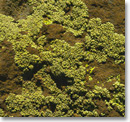 |

|
 |
 Big City Students Make
Gains in Math and Science, Report Says
Big City Students Make
Gains in Math and Science, Report Says
Eight years ago, the National Science Foundation (NSF) undertook
a bold initiative to encourage and invest in system-wide reform
of K-12 mathematics and science education in some of the most disadvantaged
urban school systems. Students in these systems were performing
poorly in mathematics and science, with wide gaps evident between
minority and majority students. NSF introduced Urban Systemic Initiatives
(USI) to enable cities to implement wide-ranging reforms through
standards-based curricula, professional development for teachers,
and accountability for achievement through data collection and assessment.
Now, an external evaluation team reports some dramatic payoffs to
these investments. Academic Excellence for All Urban Students,
a summary report on urban programs making up NSF's Urban Systemic
Initiatives (USI), shows that students in the majority of the 22
cities where school systems undertook reform efforts are making
progress in several areas.
More...
(posted July 2, 2001)
|
 |
|
 Important Pathogens and
Cures Belong to Little-Known Group of Fungi
Important Pathogens and
Cures Belong to Little-Known Group of Fungi
Researchers studying medicinal, pharmacological, antibiotic, carcinogenic
and food-production agents would do well to look at an often-overlooked
group of fungi that once had -- but then lost -- the ability to
form lichen symbioses, according to a National Science Foundation
(NSF)-funded study published recently in the journal Nature.
"The research challenges the common notion that mutualistic
symbioses are endpoints of evolution," says James Rodman, program
director in NSF's division of environmental biology.Using DNA sequence
data, the scientists have determined a more accurate fungus family
tree and reconstructed the evolution of lichen symbiosis. As a result,
a little-understood group of lichen-forming fungi is now recognized
as more important to humans than previously thought.
More...
(posted July 2, 2001)
|
 |
|
 Coral Record
Connects Climate Change in Three Oceans
Coral Record
Connects Climate Change in Three Oceans
Coral extracted from a remote central Pacific island has helped
NSF-funded scientists at California's Scripps Institution of Oceanography
construct a valuable new record of climate conditions during the
20th century. The record, which allowed researchers to trace sea
surface conditions over a 112-year-period, may hold implications
for long-range climate forecasting and predictability, a result
of the central tropical Pacific's influence on climate conditions
around the world.
More...
(posted July 2, 2001)
|
 |
|
 Widespread
Oceanic Photopigments Convert Light into Energy Widespread
Oceanic Photopigments Convert Light into Energy
A new energy-generating, light-absorbing pigment called proteorhodopsin
is widespread in the world’s oceans, say scientists funded
by the National Science Foundation (NSF) and affiliated with the
Monterey Bay Aquarium Research Institute (MBARI). Their discovery
is reported in a recent issue of the journal Nature. Last
fall in the journal Science, the MBARI researchers described
the first marine bacterium with this photopigment that can generate
cellular energy using light. "Advances in technology are letting
us view the marine microbial world in new ways," said Ed DeLong,
leader of the MBARI research group. Colleague Oded Béjà
added, "We were lucky to find these different proteorhodopsins
out there in the vast ocean."
More...
(posted July 2, 2001)
|


|

